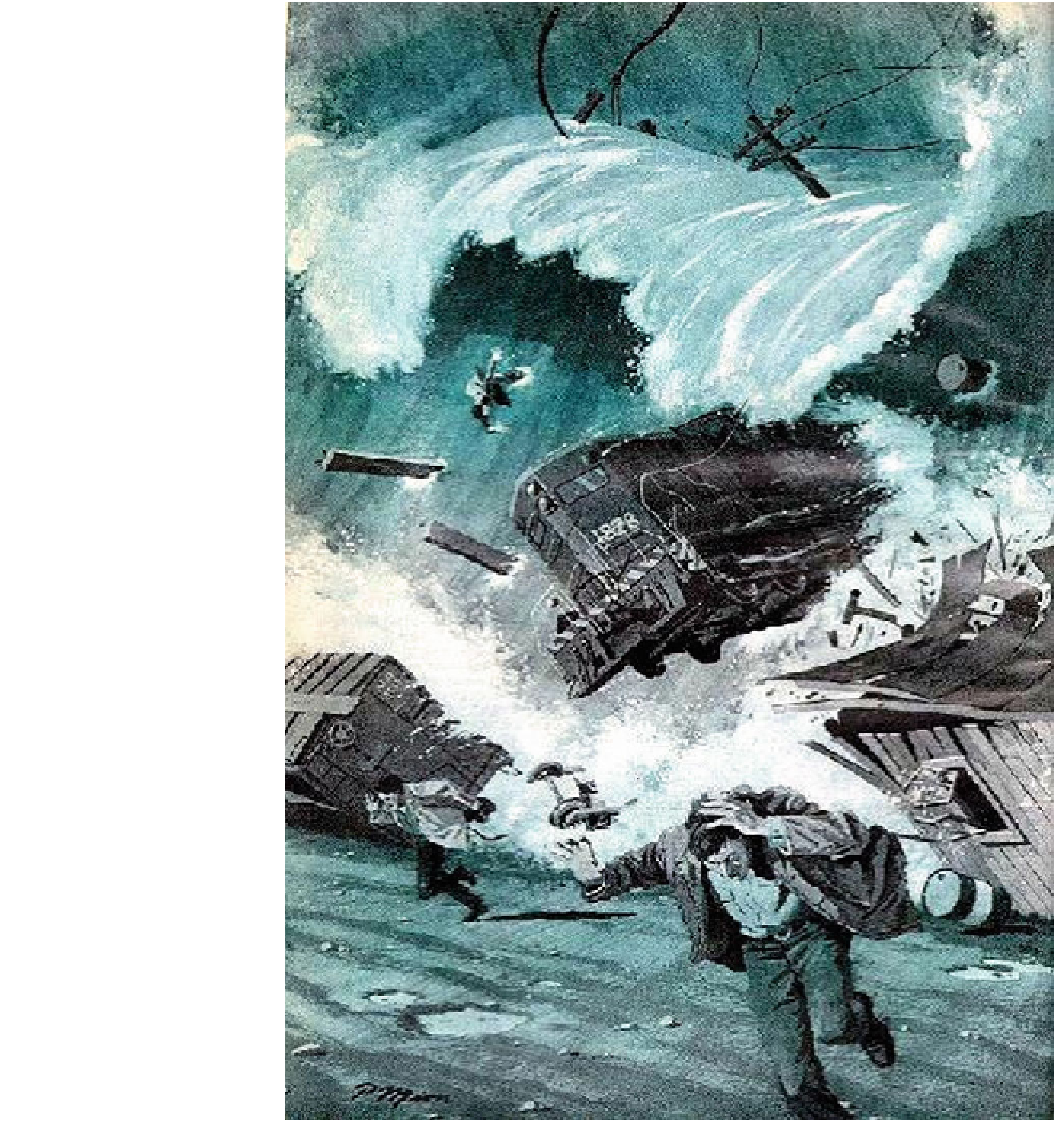Geoscience Reference
In-Depth Information
Fig. 6.1
Artist's impression of
the second and largest tsunami
smashing into the Alaska
Railway terminus at Seward in
Prince William Sound, March 27,
1964. Locomotive 1828 was
carried 50 m. Note that the
locomotive has become a water-
borne missile—a trait often
generated by tsunami bores as
described in
Chap. 2
. Drawing by
Pierre Mion and appearing in
December 1971 issue of Popular
Science. Source
http://www.
the Atlantic, damaging the coastline of the Madeira and
Azores Islands where wave heights of 1.0-1.5 m were
reported. It reached the Caribbean Sea in the early after-
noon. Reports from Antigua, Martinique, and Barbados
noted that the sea first rose more than a meter, followed by
the arrival of large waves. Run-up heights of 2-3 m
appeared on Caribbean islands facing east. Significant
oscillations continued at 5 min intervals over the next 3 h.
In total, about 20,000 people may have been killed by the
tsunami, although it is difficult to separate these deaths from
those killed by the actual earthquake.
The Lisbon Tsunami had a profound effect on the Por-
tuguese coastline. West of Lisbon at the mouth of the Tagus
River, the tsunami stripped rock surfaces and deposited
single large boulders, boulder ridges, pebbles and shells up
to 50 m above sea level—high above the modern storm

